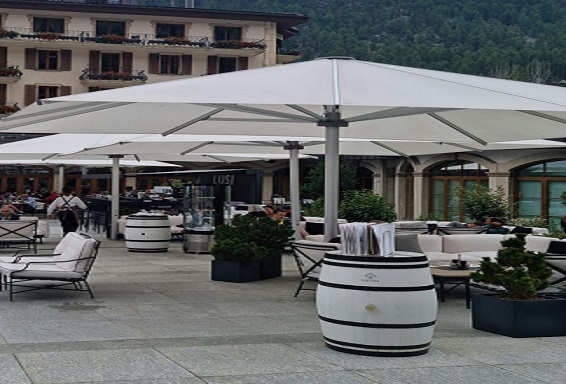Tensile structures use tension to ensure a stable form. They can resist external loads. It is achieved through tension and not by bending or compression. They might have flexible fabric or membrane that can be stretched over the structural frame. Examples include canopies, tents, cable nets, membrane roofs, bridges, pneumatic structures, geodesic domes, shade structures, etc.
Reasons for its increasing popularity
Schools, homes, and industrial plants use tensile structures for some reasons. They are:
- Low maintenance
- Affordable
- Natural lighting
- Lightweight
- Flexible design
- Easy installation
- Durable
Tensile structure production
The fact is that companies are focusing on increasing production to meet the growing market demand, especially in the construction and architecture industries. A lot of things are happening in its production and development. Manufacturers use the latest technology to provide top-quality tensile structures at affordable prices.
Revolutionizing architecture industry
Modern designers and architects seek potential technologies and materials to create unique, innovative designs. Traditional materials like concrete, steel, and glass dominated the industry. Architecture benefited immensely as fabric was introduced into the construction industry. Tensile structures are used to create innovative, large-scale, highly functional, visually stunning designs.
Its origin
Buckminster Fuller, a well-known inventor and architect introduced tensegrity to the world during the 1960s. He considered it to be the basic principle of nature. He believed the concept could explain the integration of simple individual elements into larger complex systems. He applied it to the architectural field.
Its evolution
The concept has developed into tensegrity architecture over time. It became popular in architecture and design and is currently considered a unique, complex design approach. It combines compression and tension elements, thus forming a resilient, self-supporting structure. Wires or cables are held together in tension while rigid elements are pushed or compressed together to achieve this aspect.
Know the key characteristics!
According to the well-established tensile structure manufacturer, these structures rely on tension to derive support and stability compared to compression-based structures. The latter requires a proper base to stand erect. Some of its characteristic features are:
- Versatile configurations: They come in diverse sizes and shapes. It includes simple umbrellas to canopies, large-scale pavilions to stadiums. It is its versatility that makes it popular in several architectural applications.
- Durable and lightweight: Since they are durable and lightweight, they fit structures requiring large cantilevers and spans. They even withstand changing weather elements and meet environmental challenges.
- Energy efficient: Their design permits free entry of natural light, thus reducing artificial lighting. Thus, it reduces energy costs and saves precious money. Light-colored materials used reflect sunlight, thus reducing the need for cooling and air conditioning systems.
- Sustainability: These structures are environment-friendly compared to traditional construction techniques. They use minimal materials and are often repurposed or recycled to enhance their lifespan.
- Minimalist design: These structures appear aesthetic. They are characterized by their simple and clean look while being visually appealing. They lack traditional columns, walls, and beams, thus being the perfect choice for most architectural projects.
- Maintenance: These structures are strong, durable, and need little maintenance. The reason is that they use corrosion-resistant materials, thus being a popular choice for most installations. They need minimal upkeep.
- Affordable: Compared to traditional construction techniques, tensile structures are more affordable. They use fewer materials in the construction process and can be installed quickly, thereby reducing labor costs.
Challenges faced
Although tensile structures offer numerous benefits, they come with a few challenges. Those practicing tensegrity architecture should address such challenges while designing the process. Balancing opposing forces is one such significant challenge. It ensures a stable structure and withstands varying loads. Too low compression or too high tension will mean the structure could collapse. Again, too rigid a structure means it will fail to accommodate changing loads.
Overcoming challenges
Sophisticated computer modeling techniques can help overcome such challenges. They can stimulate the structure’s behavior under diverse loads. It helps fine-tune the overall design. Thus, it balances properly the compression and tension forces. Designers may choose materials possessing specific properties. It ensures the structure withstands the heavy loads.
Revolutionizing structure development
Although tensegrity architecture faces lots of challenges, it can revolutionize structural development in a big way. Compression and tension help construct adaptable, sturdy, and lightweight structures. Thus, it helps reduce material usage and expenses while creating more effective structures. As technology advances, remarkable examples are expected.

